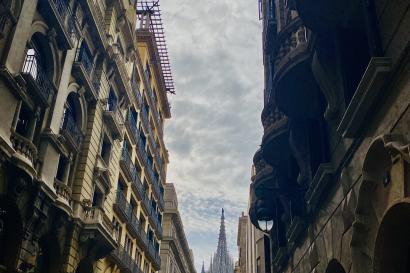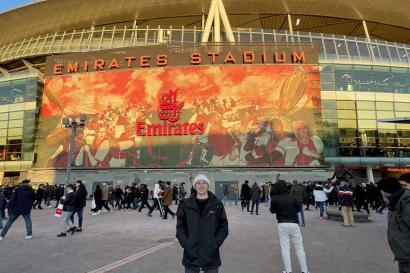IES Abroad staff talked to us about differences we’d notice between our lives here and at home, which helped us know what to expect. After spending a semester in Salamanca here are some of the things that have stood out to me (and fellow students from my program) the most:
1.Schedule
The student schedule is quite different here from in the US where I’m in class three hours a day (it’s more like six or seven hours here). The day, for everyone, is just structured differently: business hours are shorter (and sometimes seem to be nearly nonexistent: 10-2 and 5-8 or so Monday-Thursday, most everything is closed weekends and on holidays). As far as nightlife, popular student spots are empty until about 1 am and then full until 4 or so (discos from 4 on, sometimes until 7 or 8 in the morning, have plenty of customers). Then there’s Spanish punctuality: 10-15 minutes behind is the norm for university classes, though it’s nice to arrive within 5 minutes of the scheduled time of an appointment with someone.
2.Food
Well, salad is an entirely different concept here than it is at home. You won’t find ice in drinks (restaurants, like in all of Europe, expect you to pay more for a bottle of water than for a glass of wine and free refills are an alien concept). Bread, meat, and eggs are staples here. Not so different from in many parts the US, though the methods of preparation are quite different. People spend a lot of time in café-bars and restaurants here, as eating is considered a social activity and entertaining is not done in the home
3. Greetings
You’ll greet everyone, including strangers (of all ages and genders) with a kiss on each cheek, though the male-to-male cheek kisses are sometimes replaced with a handshake, except in family settings. And quite often I’ve been greeted in another way on the streets, with catcalls, as have many of my female friends. One can also not help but note that public displays of affection are much more common here than in the US, and these are seen frequently in just about all public spaces.
4.Transportation
In Salamanca you can walk just about everywhere you’d like to go, which is lovely. This is the means of transportation most people choose, though buses are available in some areas and I’ve seen a number of people use bicycles. In the center of the city there are far fewer cars than one would expect to see in a US city, and it’s been refreshing to live in such a pedestrian place.
5.Littering
This is so common in Salamanca, but it hasn’t stopped surprising me over the course of my time here. In bars in Spain it is considered perfectly acceptable to drop things on the ground, more than anything napkins, which gives the floor a different appearance than I was used to seeing in restaurants before I arrived here. This results in some strangeness with bars that offer terrace seating as the street becomes covered in wadded-up papers, it seems that in the minds of the napkin-droppers the street is no longer outdoors when it is being used as a bar. In Salamanca the streets are vacuumed and even washed daily, which seems to encourage people to leave bottles, bags, cigarette butts, and other refuse in their path, despite the ubiquity of adequate receptacles.

Cailey Oehler
<p><span style="color: rgb(29, 29, 29); font-family: Arial, Verdana, sans-serif; font-size: 12px; line-height: normal; background-color: rgb(237, 237, 237);">I am a junior at Bowdoin College, where I am majoring in Spanish and minoring in Art History and Teaching. I'm outgoing and inquisitive, and getting to know other people is how I make sense of this mixed-up and beautiful world. My favorite hobbies are baking bread, playing ukulele, and camping. I love exploring new places and am looking forward to getting to know Salamanca as well as the fun and challenges I'll encounter in my travels around Europe.</span></p>







